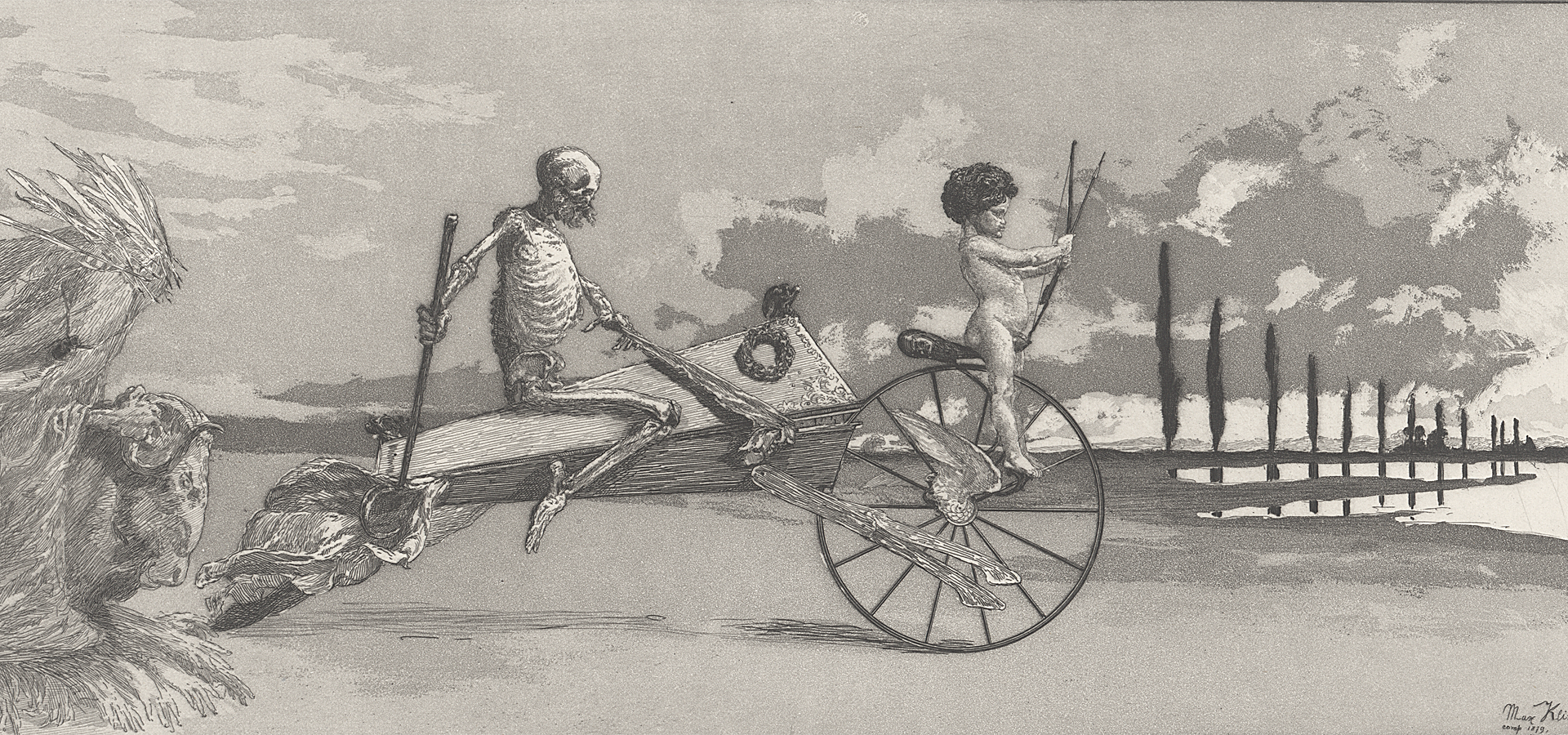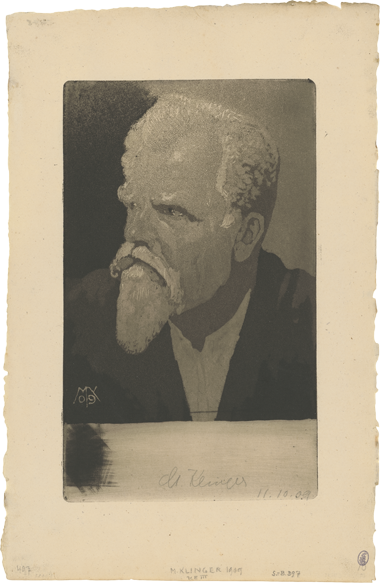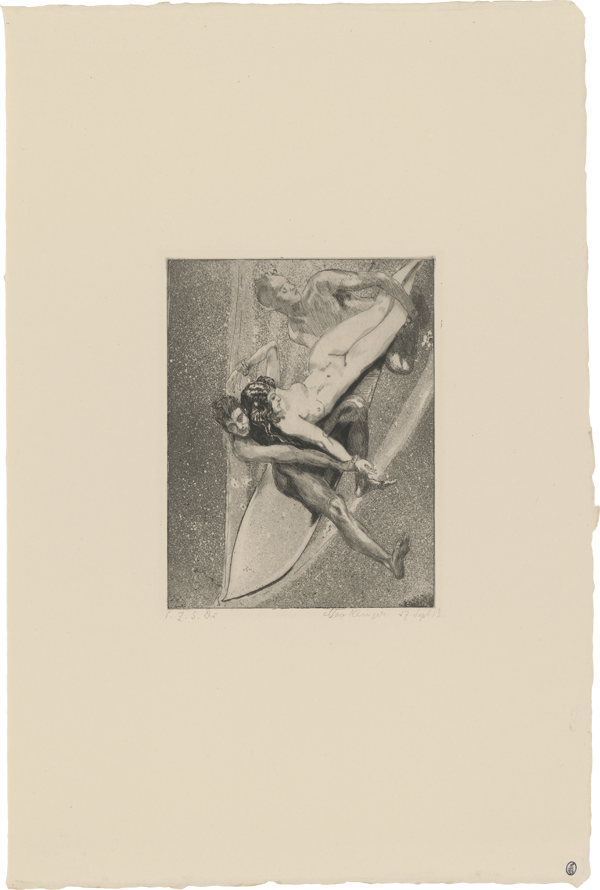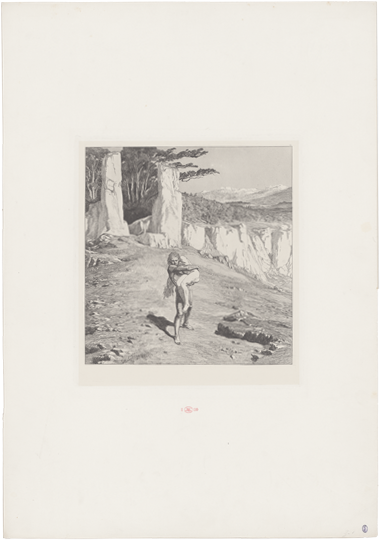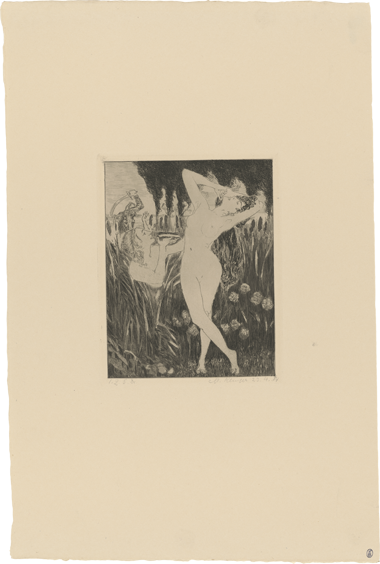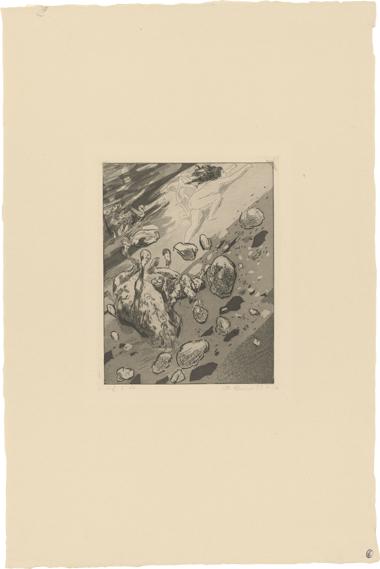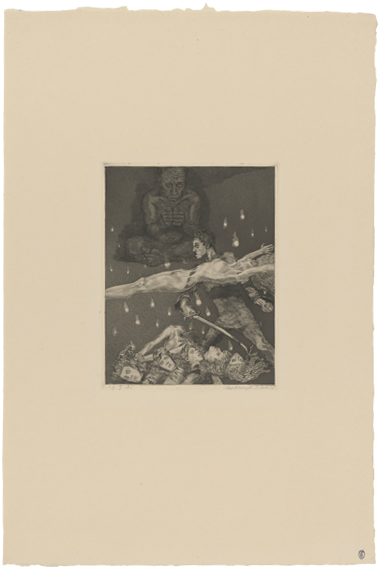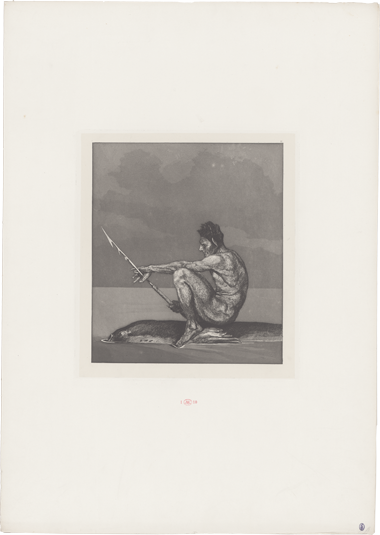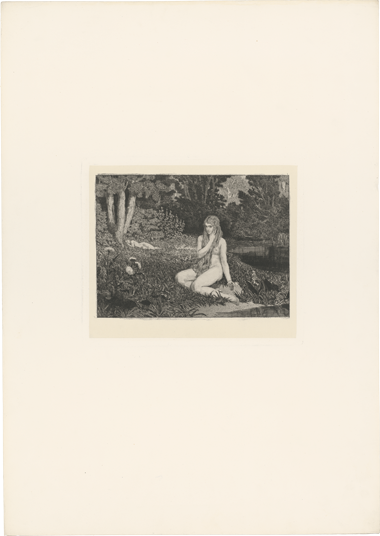The Exhibition
Max Klinger (1857–1920), considered the ‘German Michelangelo’ by his contemporaries, was not only famous for his sculptures and paintings but also for his prints, in particular. His innovations in this field were compared to no one less than Albrecht Dürer. Numerous 20th-century artists, including Max Beckmann, Käthe Kollwitz and Max Ernst, drew on the works of Max Klinger.
On the occasion of the 100th anniversary of his death, the Staatliche Graphische Sammlung München is commemorating the graphic artist who completed many of his major cycles in Munich and worked intensively with a publishing house in the city. The sensational new narrative style in Klinger’s graphic cycles is shown using selected examples and his last, rarely exhibited cycle ‘Tent’ (Opus XIV, 1915–17) will be displayed in Munich for the first time.
Planning your visit
Open today till 6.00 pm
Daily 10.00 – 18.00
Thursday 10.00 – 20.00
Monday closed
Barer Straße 40
80333 München
Sunday admission 1€
Thursday – Saturday 10€
reduced 7€
Day pass (Alte Pinakothek, Pinakothek der Moderne, Museum Brandhorst, Sammlung Schack) 12€
Apart from Klinger’s native city of Leipzig, the Staatliche Graphische Sammlung München houses one of the most extensive collections of his drawings and prints that have come from two sources. In 1957, the Leipzig art dealer Carl Beyer’s children donated his comprehensive collection of rare prints to the Staatliche Graphische Sammlung. Carl Beyer (1870–1948) had worked together with Klinger personally and compiled an appendix to the catalogue raisonné of his works on paper. Shortly afterwards, the ‘Kunstverwaltung der Bundesrepublik Deutschland’ transferred the collection of the Chemnitz textile industrialist Hans Vogel (1867–1941) – one of the artist’s major patrons – to the Staatliche Graphische Sammlung München as a permanent loan. It had been purchased in 1941 from Vogel’s heirs for the ‘Führermuseum’ art gallery planned for Adolf Hitler in Linz. An explanation of these correlations as well as the idiosyncratic characteristics of Klinger’s prints form a prelude to the exhibition.
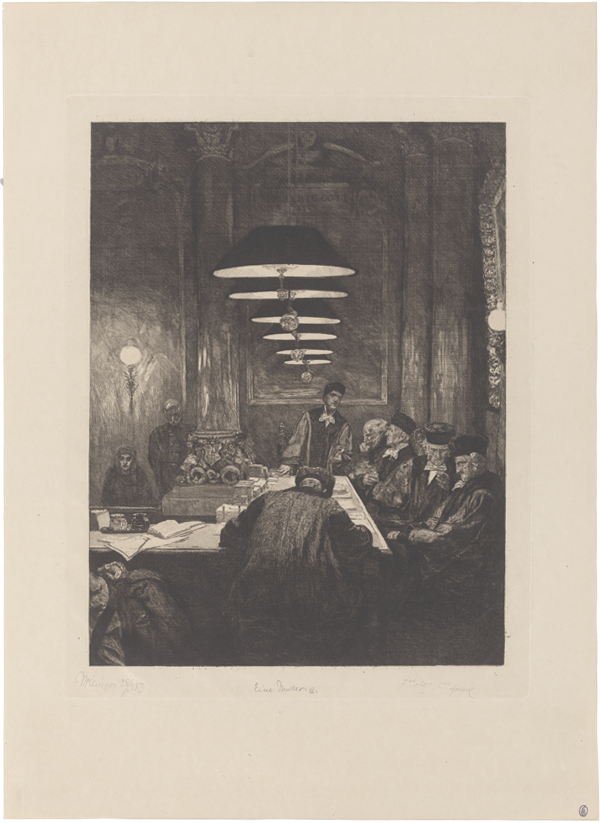
© Staatliche Graphische Sammlung München
The exhibition itself is divided into three parts. The first two rooms illustrate the multifaceted quality of Klinger’s cycles where the focus is on the narrative structures and techniques used to achieve the wide variety of means of expression. Among others, the most famous cycle ‘A Glove’ (1881, Op. VI), based on the artist’s own personal experience, can be seen here, as well as the ‘Dramas’ cycle (1883, Op. IX). This summarises several social and political subjects that Klinger had addressed up until that time.
The adjoining exhibition area shows how selected compositions for the cycles were created. Visitors can look over the aritst’s shoulder as he reworks a figure, heightens graphic effects or alters a format. Discarded compositions and different states of a graphic work were already much in demand by contemporaries and were also to be found on the art market.
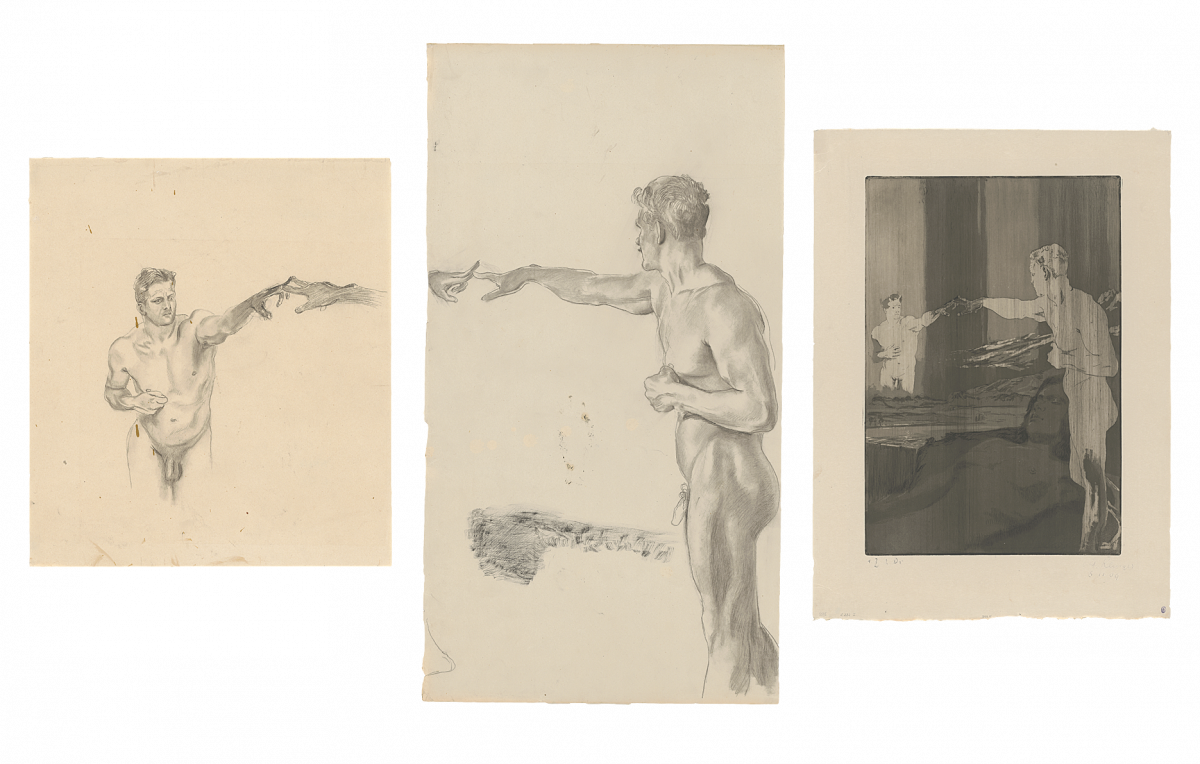
Middle: Max Klinger (1857-1920), Male Nude, pointing into the depths (philosopher), 1900-1909, study for: Opus XIII, Of Death, second part, sheet 3 B, black chalk, brush in black, sheet size 526 x 288 mm © Staatliche Graphische Sammlung München
Right: Max Klinger (1857-1920), philosopher, 1909, Opus XIII, Of Death, second part, sheet 3 D, etching, aquatint and engraving, 272 x 360 mm (plate), 647 x 472 mm (sheet) © Staatliche Graphische Sammlung München
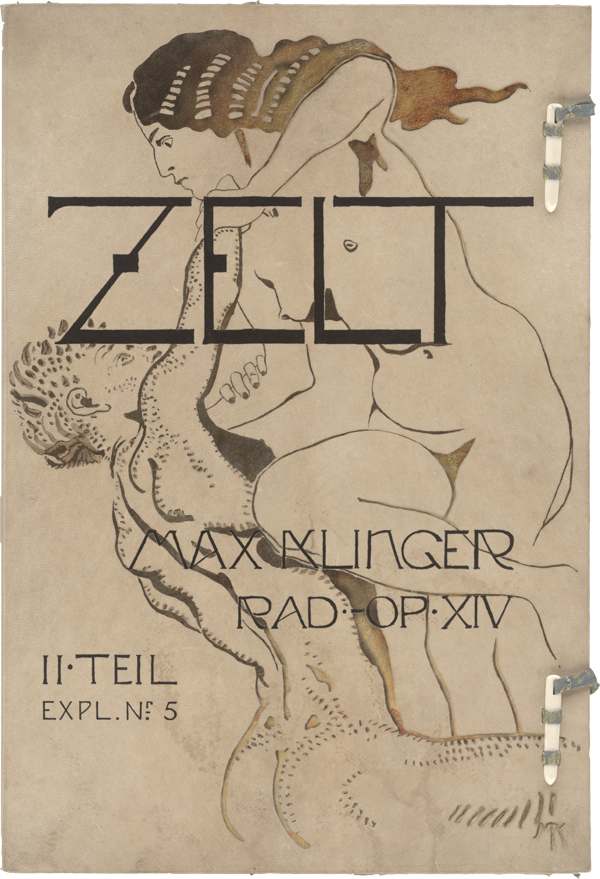
Forming the conclusion of the exhibition, the ‘Tent’ cycle – the culmination of Klinger’s oeuvre – stands for the sum of his narrative artistry and fantastic pictorial invention in which the originary adventure story of an erotically sensual beauty unfolds in an oriental setting. Even if its execution were criticised by contemporaries and the storyline misunderstood, the cycle unites Klinger’s themes and all the technical possibilities of his ‘Griffelkunst’, as he called the art of the graphic print himself. The artist combined the line biting and aquatinta techniques of etching with copperplate engraving and mezzotint. As if referring to the new media of his day – the cinema and the cartoon – he developed a narrative structure full of suspense in his series of monumental images.
RAHMENPROGRAMM
MAX KLINGER ALS ZEICHNER
DO 30.04. um 18 Uhr Führung
Studiensaal der Staatlichen Graphischen Sammlung München
FÜHRUNGEN AUS ERSTER HAND
mit Dr. Andreas Strobl
Jeweils um 18.30 Uhr
Do 05.03. | Do 16.04. | Sa 02.05.2020
Ort: Pinakothek der Moderne
DAS EWIGE IM JETZT
Dialogführung mit Andreas Strobl und Hochschulpfarrer Michael Preß
Sa 02.05.2020 | um 15.30 Uhr, Beginn in St. Markus | Gabelsbergerstraße 6
YES, WE‘RE OPEN!
Interkultureller Workshop
Fr 06.03.2020 | um 15.00 Uhr
Ort: Pinakothek der Moderne
